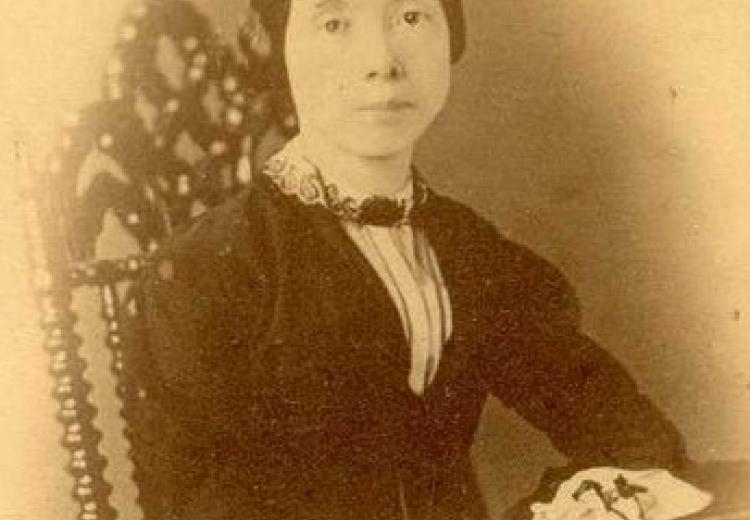Lesson 2: Responding to Emily Dickinson: Poetic Analysis

A cabinet card copy of a daguerreotype of Emily Dickinson, ca. 1850.
Dickinson's letter manuscripts with her sister-in-law Susan Huntington Gilbert Dickinson's revisions provide a fascinating insight into the process of Emily Dickinson’s craft, specifically with the creation of “Safe in their Alabaster Chambers." Complicating commonly held notions that she was a recluse who wrote purely in isolation, Dickinson in reality maintained many dynamic relationships throughout her lifetime and specifically sought out dialogues on her poetry. Her correspondence—both professional and private—reveal a poet keenly aware of the interdependent relationship between poet and reader.
For a complete introduction to the three lessons in this curriculum unit, The Letters and Poems of Emily Dickinson review the curriculum unit overview.
Guiding Questions
How does Emily Dickinson develop her voice as a poet, especially as reflected in her correspondences with Susan Huntington Gilbert Dickinson about the poem “Safe in their Alabaster Chambers”?
How does collaboration fuel creativity in an artist's work?
How does each element of a poem work together to create a common theme or purpose?
Learning Objectives
Analyze Dickinson’s artistic development as reflected in her poetry and correspondence.
Analyze how Susan Huntington Gilbert Dickinson’s editorial relationship with Emily Dickinson affected Dickinson's poetry.
Draw connections between different pieces of figurative language and determine how they contribute to the overall message of a poem.
